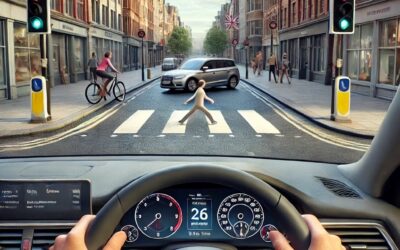Choosing whether to learn in an automatic or manual vehicle isn’t merely a matter of convenience or personal preference—it can have a substantial financial impact over the long term. Recent data from industry sources reveals that new drivers holding an automatic‐only licence still face significantly higher insurance premiums than those with a manual licence. While the gap has narrowed slightly in recent years, the figures remain notable.
A Stark Insurance Premium Divide
Recent research indicates that drivers with an automatic‐only licence may pay, on average, around 35–45% more for their car insurance than those who have trained in a manual vehicle. Insurers argue that automatic drivers present a higher risk profile, largely due to claim frequency. Updated figures suggest that automatic‐only drivers register roughly 20–25% more claims than their manual counterparts. This discrepancy is attributed not only to the cost of the vehicle itself but also to the differing driving styles that each group tends to develop.
The Role of Forward Planning
A key element in these differences is the skill of planning. Learning to drive manual forces a pupil to consider gear selection, engine revs, and the precise moment to decelerate well before reaching a junction or hazard. This process naturally cultivates a mindset of anticipation and proactive hazard management. In contrast, learners who opt for automatic lessons often experience a more reactive driving style; the absence of gear changes means they are not compelled to plan as meticulously in advance. The result, according to updated data, is a higher likelihood of being involved in incidents that result in insurance claims.
Beyond Insurance: The Broader Financial Picture
It isn’t only the insurance premiums that tip the balance. Automatic vehicles themselves often carry a higher price tag—not solely in purchase cost, but also in repair expenses. For many young drivers on tight budgets, the overall expenditure of owning and insuring an automatic car can be considerably steeper. Recent comparisons have demonstrated that even when insuring the same model, those with an automatic‐only licence are quoted higher prices, sometimes translating into thousands of extra pounds over the lifespan of the policy.
Take, for example, a 17‐year‐old driver considering a used model such as a Toyota Aygo. Updated quotes reveal that while a manual version might secure an annual premium in the region of £3,900, switching to an automatic model (with all other factors equal) can raise the premium to over £6,300. For many new drivers, these figures are not trivial.
Is There a Way to Mitigate the Costs?
For those determined to learn in an automatic—whether for perceived ease or due to modern trends towards electric vehicles—there are still methods to help keep costs in check. Recent advice from insurance comparison sites includes:
- Adding an experienced driver as a named driver: Incorporating a seasoned driver (such as a parent or guardian) can reduce the perceived risk.
- Exploring telematics or ‘black box’ policies: These reward safe driving habits, potentially narrowing the cost difference.
- Adjusting mileage and coverage carefully: Tailoring these factors on your quote can lead to meaningful savings.
Weighing Up the Options
While automatic vehicles offer undeniable ease of use—particularly in congested urban areas—the updated data suggests that, for many new drivers, the manual option remains financially more attractive over time. Not only do manual drivers benefit from lower premiums, but the process of learning in a manual also appears to build stronger anticipatory driving skills, which could contribute to a safer driving record overall.
The decision is ultimately a personal one. However, if keeping ongoing costs to a minimum is a priority—and if you’re willing to invest a bit more time in mastering the art of planning—a manual licence might offer both immediate and long-term benefits.





0 Comments